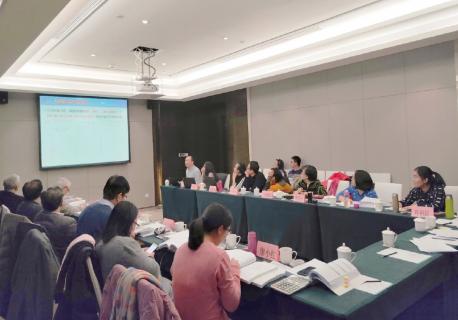

| On December 25, 2018, it was held in Beijing the project acceptance meeting of the Second National Pollution Sources Census Accounting for Industry Pollution Production and Discharge: 291 Rubber Products Industry of the Ministry of Ecology and Environment, which was undertaken by China Rubber Industry Association (CRIA). Compared with the “First Pollution Sources Census”, the “Second Pollution Sources Census” has large coverage, high intensity and high requirements. It has added hazardous waste items, and paid more attention to exhaust emissions at the same time. |
The “Second Pollution Sources Census” aimed to find out the basic situation of various pollution sources in the industry, establish accounting methods for pollution production and discharge in rubber industry, and formulate pollution production & discharge coefficient and pollution production & discharge manual, concerning the issuing standards of enterprises’ environmental permit, and closely related to future establishment of environmental policy and carbon emission tax.
Zhu Hong, director of the CRIA Technical and Economic Committee, introduced that compared with the “First Pollution Sources Census”, the organized waste gas collection of enterprises investigated by the “Second Pollution Sources Census” was more perfect. According to the analysis of investigation results, the amount of waste water in the tire industry has dropped by 88%, and the petroleum and chemical oxygen demand in waste water have also been greatly reduced; the reclaimed rubber industry has almost no waste water discharge. In addition, the amounts of waste gas generated by two desulfurization processes in the reclaimed rubber industry were very different. The pollution producing coefficient of industrial waste gas volume, particulate matter and non-methane total hydrocarbon of continuous desulfurization under normal pressure was smaller than that of dynamic desulfurization; and it was the current development trend of the industry to reduce pollutant discharge by promoting new environmental protection technology.
For the rubber products industry, waste gas mainly refers to non-methane total hydrocarbons and particulate matter, mainly from the mixing, extrusion (calendering) and vulcanization processes. During the “First Pollution Sources Census”, old-fashioned internal mixers were mostly used in rubber factories. They only performed simple dust removal, and the workshop environment was poor. With the improvement of China’s environmental protection requirements and the enhancement of enterprises’ environmental awareness, enterprises continue increasing environmental protection investment and improving equipment levels. Large-scale enterprises in the industry mainly carry out waste gas treatment by technologies of bag dust removal, photocatalysis & low temperature plasma, regenerative thermal combustion method and adsorption/catalytic combustion method.
Zhu Hong explained that in this “Second Pollution Sources Census” Accounting for Industry Pollution Production and Discharge, CRIA was responsible for establishing the accounting methods for industry pollutant production & discharge capacity of rubber products industry. To this end, the investigating team and the third-party detection institution visited the concentration area of rubber production in such regions as Shandong and Guangdong, selecting seven representative rubber enterprises to conduct sampling and field investigation of wastewater and waste gas.
Seven companies actively cooperated with the work of investigating team: Doublestar Group Co., Ltd., Shandong Jinyu Tires Group Co., Ltd., Shandong Hengfeng Rubber & Plastic Co., Ltd., Xiantao Juxing Rubber Co., Ltd., Guilin Zizhu Latex Products Co., Ltd., Guangzhou Double One Latex Products Co., Ltd. and Shaoyang Heibaoshi Renewable Resources Co., Ltd. These seven enterprises all have environmental assessment approval and environmental protection facilities, and also have historical pollution discharge data from third-party detection.
In addition, the investigating team also acquired the historical data of 28 enterprises’ factory pollution discharge through correspondence.
The expert group spoke highly of the subject report of CRIA. They believed that the coverage of survey data was wide, the research methods were scientific, and the processing methods were reasonable. They also discussed issues such as waste gas collection efficiency and industrial exhaust volume. Finally, the expert group unanimously agreed to pass the project acceptance.
The acceptance meeting was hosted by the Chinese Research Academy of Environmental Sciences.